Entrevista: Rikard Sjöblom (Big Big Train, Beardfish)
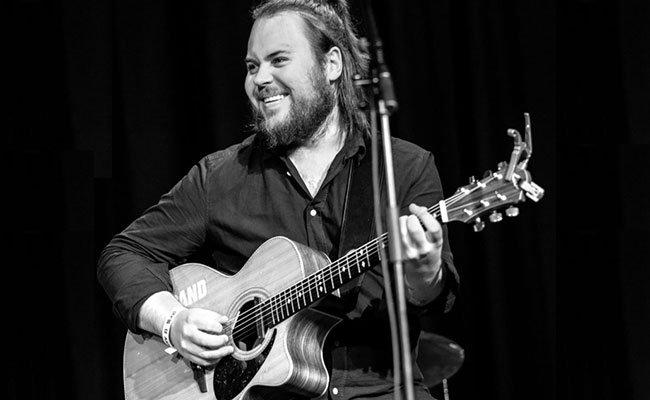
Por Mairon Machado
Colaboração: Diego Camargo
Tive a honra de entrevistar um dos meus grandes ídolos da atualidade. Em parceria com o site Progshine, através do meu amigo Diego Camargo, pude trocar uma ideia com nada mais nada menos que Rikard Sjöblom, eterno líder do Beardfish e atual Big Big Train e Gungfly. Em uma conversa bem humorada e muito humilde, Rikard contou-me sobre estes e outros projetos que está desenvolvendo atualmente, além de passear pela história do Beardfish. Uma alegria inenarrável ter conversado com Rikard. Confira abaixo a entrevista, tanto em português quanto em inglês.
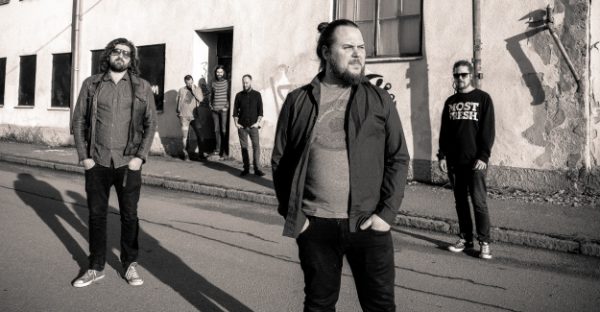
Entrevista em português
Olá Rikard. Antes de tudo, muito obrigado por conceder essa entrevista para os sites Progshine e Consultoria do Rock. Gostaria de começar falando sobre seus mais recentes projetos com o Gungfly e o Big Big Train. No último dia 20 de março, o álbum On Her Journey To The Sun foi disponibilizado para compra pre-order em seu facebook oficial, sendo o mesmo lançado em 19 de maio. Conte-nos um pouco sobre a ideia do projeto e o processo de gravação do mesmo.
Este não é um álbum conceitual, mas está trazendo temas recorrentes, e o principal é sobre uma mulher que foi deixada para trás quando seu amante fez um último sacrifício e protegeu um grupo de pessoas. Acho que está entre os atos mais corajosos que alguém pode fazer. Algumas vezes, quando alguém morre, ela torna-se quase intocável e você guarda a memória dela em alto nível, quase como um Sol. Então, eu decidi que quando este herói morreu, ele renasceu como um Sol, e daí o título On Her Journey to the Sun. Então, como a mulher aqui tratada é muito relacionada com os fatos que aconteceram com ela, em relação a morte de seu amante, isso faz este título mais uma jornada espiritual, e não física – ela está na sua jornada espiritual para o Sol. Buda foi escolhido como a face do Sol por causa de sua calma, sua expressão sóbria, alguém que está em paz.
Gravei o álbum indo e vindo, por cerca de um ano, mas o pico das sessões ocorreu no outono de 2016.
Trabalhando como poucos, você também tornou-se membro do grupo Big Big Train, a partir de 2014, grupo esse que para mim, ao lado do Beardfish, representa a nata do rock progressivo nesse milênio. Como surgiu o convite para você participar do grupo inglês?
Big Big Train não apresentava-se ao vivo haviam 17 anos, e estavam planejando fazer isso. Então eles estavam procurando por alguém que podia tocar teclados e guitarras, bem como fazer alguns vocais de apoio. Eu estava em turnê com o Beardfish, e o engenheiro de som da turnê era Rob Aubrey, que trabalhava muito próximo ao Big Big Train, e foi ele quem me recomendou. Depois disso, eu recebi um e-mail de Greg Spawton (n. r. guitarrista do Big Big Train) perguntando se eu estava interessado em participar de um projeto – eles estavam indo fazer uma sessão no Real World Studios, para gravar e filmar o processo inteiro e lançar isto como um blu ray – e eu fiquei honrado e disse sim prontamente. As sessões foram ótimas, e após elas, eles me convidaram para ingressar na banda em tempo completo, e eu disse sim.

Quais as principais influências que você conseguiu levar para a banda já para o álbum Folklore (2016)?
Bem, é difícil de falar. Acho que estou trazendo meu próprio estilo de tocar minha forma de compor em partes, é claro. Muitas vezes Greg ou David (Longdon) tem mais ou menos finalizadas as suas partes, mas a maioria das vezes eu adiciono um “toque de Sjöblom” nisto. Então, no último disco, Grimspound, eu co-escrevi “Meadowland” e “A Mead Hall in Winter” junto de Greg Spawton e David Longdon (flautista e vocalista do Big Big Train).
O que você pode nos falar sobre o novo álbum, Grimspound, que foi lançado no final de abril?
Estou realmente feliz com a forma como ocorreu, e feliz por ter escritos algumas passagens também. É um álbum muito dinâmico, tanto nas composições como musicalmente.
Tanto Grimspound quanto On Her Journey To The Sun serão lançados em vinil. Qual sua opinião sobre o retorno do LP como uma forma de contato entre fãs e bandas?
Eu nunca parei de ouvir vinil. É o meu formato favorito desde que eu era criança, e ainda é. Particularmente, acho que isto sente-se mais como um álbum real quando você tem o LP em mãos, ao invés do CD. Eu gosto do som do vinil também, não diria que é melhor – mas que é, é – mas alguns álbuns beneficiam-se das limitações do formato.

Aqui no Brasil, o vinil deixou de ser fabricado a partir dos anos 90, voltando a nascer das cinzas em meados da década passada. Lojas de disco tradicionais acabaram fechando, e a opção foi voltar-se para o mercado internacional, em sites como e-bay ou amazon, para buscar vinis. Essa transição vinil/CD também ocorreu na Suécia, ou o país manteve-se fabricando os dois formatos ao longo dos anos?
Foi o mesmo aqui – mas algumas lojas deixaram de vender CD’s e DVD’s (e camisetas, canecas, outros mimos), mas não realmente como antes, é claro.
Você também está com um projeto ao lado do monstro baterista Hasse Bruniusson e do guitarrista Roine Stolt, que irá tocar canções do saudoso grupo Samla Mammas Manna. Como surgiu a ideia desse projeto, e o que podemos esperar em termos de shows e lançamentos?
Hasse me ligou e perguntou se eu estava interessado em tocar estas canções ao vivo, em um festival na cidade de Uppsala, ao lado dele, Roine Stolt e o baixista Håkan Almqvist. Isto pareceu ser uma ótima ideia, e como eu ouvi e muito os discos do Samla quando eu era jovem, eu conhecia as canções muito bem na minha cabeça. Isto é ótimo, uma aventura musical e muito divertido de tocar! Nos apresentamos em Gotemburgo há algumas semanas atrás, e foi incrível!
Todos esses projetos envolvem o rock progressivo. Além desse estilo, que outros você costuma ouvir no seu dia a dia?
Eu ouço a maioria dos estilos, muitos deles é relacionado ao prog, mas eu ainda ouço muito de pop/rock ou metal tanto quanto o prog. Sou um grande fã do Pearl Jam e realmente gosto de Chris Cornell. Foi triste ouvir sobre sua morte em maio. Ultimamente eu tenho ouvido muito de Daniel Romano – seus dois últimos disco, Mosey e Modern Pressure, são excelentes!
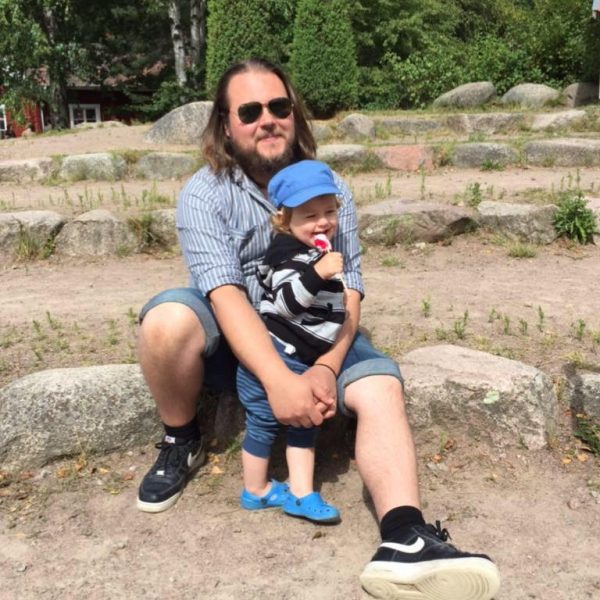
Falando agora sobre sua carreira no Beardfish, o grupo começou como um quarteto, mas o primeiro disco da banda foi registrado como um quinteto, tendo a presença de Stefan Arosson. Como funcionava o trabalho de divisão dos teclados entre vocês?
Ele tocava todos os teclados ao vivo (principalmente órgão e moog) e eu somente gravei algumas partes das teclas no primeiro álbum. Quando Stefan saiu, pouco depois do primeiro álbum ser lançado, foi quando eu decidi de tocar teclados no Beardfish – nós basicamente não queríamos mais ninguém na banda, e então, eu peguei o papel tanto dos teclados quanto da guitarra. Foi um período muito criativo para nós.
Från en plats du ej kan se… foi todo gravado em sueco, e após ele, demorou três anos para o lançamento de The Sane Day, o qual já veio com letras em inglês. O que ocorreu para essa demora no lançamento dos álbuns, bem como na mudança das letras.
Não mesmo! Antes de tudo, Från En Plats… tem três canções em sueco e quatro em inglês, então, ele foi uma mistura de línguas. E lançamnos The Sane Day em 2005, então foram dois anos, e não três. Hahaha! Fatos pontuados e constatados 😊 A principal razão para levar dois anos para gravar foi que nós tínhamos muito material novo, e não sabíamos onde iríamos gravar. Inicialmente, tentamos gravar em nosso estúdio de ensaios, mas a qualidade do som não era o padrão (muitas dessas gravações podem ser ouvidas em The Early Years – Outtakes and Demos, que foi lançado junto com ComfortZone) mas quando conseguimos o estúdio e a aparelhagem, acho que gravamos a maior parte do álbum em apenas duas semanas – um CD duplo.
Ao mesmo tempo, a partir de The Sane Day, todos os álbuns do Beardfish são conceituais. Quais os motivos que o levaram a escrever histórias tão interessantes, e ainda, como foi “musicalizar” essas histórias?
Principalmente, acredito que são temas claros que surgem quando eu começo a escrever as letras paras as canções, e é fácil cair em um caminho de “ligue os pontos”, você sabe? A música sempre esteve lá, então escrever as letras era sempre a parte mais difícil. Eu tinha que esperar uma boa ideia vir – felizmente, uma boa ideia usualmente leva a outra. Eu acho que esta é a principal razão deles serem álbuns temáticos ou conceituais.
Com Sleeping in the Traffic, você passou a usar o acordeão com destaque, o que acabou não sendo da mesma forma usado nos demais álbuns. Por que você preferiu seguir apenas com os teclados, a guitarra e os vocais?
Existe acordeão em todos os nossos álbuns, com exceção de The Void e +4626-COMFORTZONE – mas ele pode não ter sido creditado nas capas. Sempre tenho a música, mas não qual instrumento eu tocarei. Meu principal objetivo é, e sempre será, atingir o melhor resultado, não importa quais instrumentos serão usados.

Aqui na Consultoria do Rock, Sleeping in the Traffic pt. 2 foi eleito um dos dez melhores discos de 2008. Por que o álbum foi dividido em pts 1 e 2, e não foi lançado originalmente no formato duplo, assim como The Sane Day.
Nós não tínhamos todo o material gravado, e ele foi feito durante três sessões diferentes, talvez quatro. É a única razão que eu posso dar.
No encarte de Sleeping in the Traffic vol. 2, você comenta que a faixa-título foi escrita em 2002, fazendo parte das apresentações do grupo, mas que não havia a oportunidade de gravá-la em estúdio. Ao mesmo tempo, você cita algumas dificuldades para concluir a história. Como surgiu especificamente a criação total desses dois álbuns, os quais considero os melhores trabalhos de sua carreira.
Obrigado. A canção por si só foi finalizada em 2002. Existe uma gravação inicial disto naquela época, então, não houve problemas em finalizar a história. MAS, era uma grande música para nós, e eu achava estranho lançar ela em um álbum de forma isolada. Então, ao invés disso, escolhemos construir dois álbuns em torno da canção, e por isso tornou-se um álbum duplo.
Em The Sane Day, percebo influências de Focus na faixa de abertura, “A Love Story”, Frank Zappa em “Igloo on Two”, depois vejo algo de Gentle Giant em “Cashflow”, e, passando por várias outras referências, um K de King Crimson em “Comfort Zone”. Porém, todas essas referências surgem espontaneamente, sem soarem pretensiosas. Como criar algo tão legal com uma base tão sólida de influências?
Hahaha! Bem, você não pode me perguntar isso!! Tenho ouvido diferentes opiniões sobre isto por diversas vezes. Alguns pensam que soamos muito originais e outros pensam que nós rasgamos os outros artistas (alguns você até mencionou). Eu não sei. Para meu conhecimento, nós nunca realmente roubamos qualquer coisa. Existem, possivelmente, partes que soam como outros artistas, acredito eu.
Pessoalmente, quais são seus maiores ídolos e referências para tocar?
Frank Zappa, King Crimson e Gentle Giant eu diria. Mas novamente … Elton John (fase inicial), The Beatles, Chris Cornell (Euphoria Mourning e Soundgarden), Jeff Buckley, Pearl Jam, Samla Mammas Manna + cada artista que eu já tive a felicidade de trabalhar também.
Zappa aliás também é parte de outro projeto seu. Como funciona a seleção de músicas que a banda apresenta em seus shows?
O grupo é chamado Bongo Fury. É um trio com Petter Diamant e seu irmão Rasmus Diamant, junto a mim, fazendo a música de Frank no formato power trio – então, basicamente é o Gungfly (light trio version) tocando canções de Frank Zappa. Somente pegamos aquelas canções que achamos que irá funcionar bem ao tocá-las como trio.
Como foi o encontro da banda com Gary Green durante o ProgDay Festival, bem como a apresentação e receptividade dos americanos nessa que foi a primeira apresentação da banda fora da Suécia.
Foi ótimo encontrar Gary Green. Todos nós smos grandes fãs de Gentle Giant, então foi realmente muito legal que ele estava lá. Isto foi um festival sensacional. Tivemos um grande dia, tanto tocando como assistindo. Fizemos grandes amigos lá, para o resto da vida, como Ray Loboda e Jim Robinson.
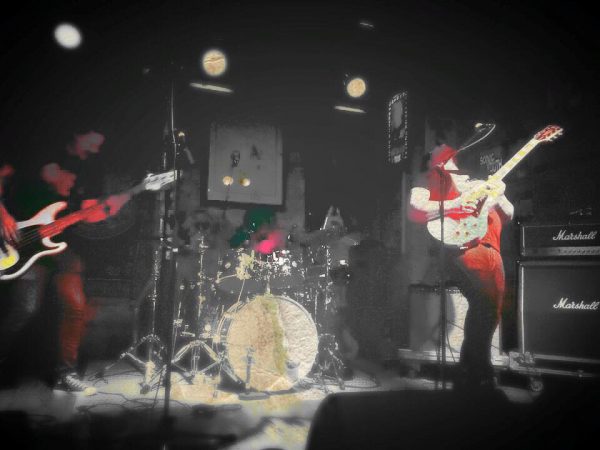
Dentre os álbuns do Bearfish, qual foi aquele que você mais curtiu ter composto, e qual o que mais lhe agradou no resultado final.
Meu favorito é Destined Solitaire, seja musicalmente ou pelo período em que nós o construímos.
Na despedida oficial da banda, via seu website, os fãs leem a mensagem com uma frase chocante, falando sobre desentendimentos e várias dificuldades dentro da banda, isso pouco depois de Comfort Zone, bem como novos caminhos vão ser seguidos por cada membro da banda. O que realmente foi o fator determinante para o fim de um projeto tão incrível e maravilhoso como o Beardfish?
Não estávamos funcionando bem juntos em uma mesma sala, há algum tempo.
Podemos esperar um retorno, ao menos para comemorar os 20 anos de carreira?
Nunca sabemos. No momento, sem planos.
Sobre o Brasil, você já teve a oportunidade de vir ao nosso país, seja como turista ou como músico?
Não, infelizmente não. O mais próximo que eu estive do Brasil foi a Guiana Francesa.
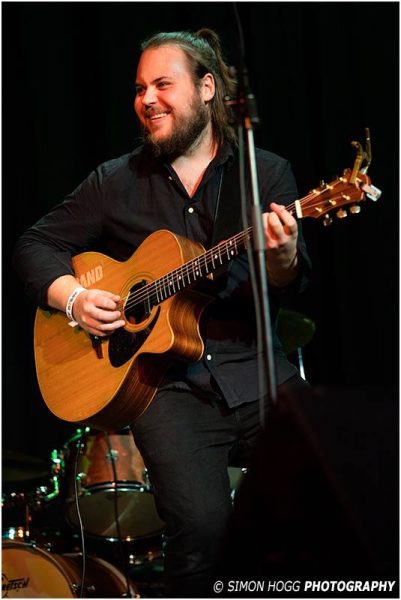
Dentro do rock progressivo, nosso país tem nomes de destaque como O Terço, Mutantes, Terreno Baldio, entre outros. Você já ouviu algo progressivo vindo de nosso país?
Não, lamento não conhecer. Irei atrás!
Com tantos projetos em sua carreira, e tantos fãs por aqui, com certeza esperamos que um dia você esteja em nossos palcos para mostrar sua música pessoalmente. Ainda na Consultoria, temos uma seção chamada Notícias Fictícias que Gostaríamos que Fossem Reais. Seria possível tornar real uma notícia como “Rikkard apresenta-se no país em um grande festival?”
Hahaha! Assim espero. Não posso prometer nada. Eu iria amar ir ao Brasil e tocar aí!
Rikard, obrigado por sua atenção e por favor, deixe um recado para nossos leitores e também seus fãs aqui no Brasil.
Obrigado por ouvir nossa música ao longo dos anos. Espero poder tocar ao vivo para vocês em breve!
Abraços

English Interview
I had the honor of interviewing one of my great idols today. In partnership with the website Progshine, through my friend Diego Camargo, I was able to exchange an idea with nothing less than Rikard Sjöblom, eternal leader of Beardfish and current Big Big Train and Gungfly. In a humored and very humble conversation, Rikard told me about these and other projects he is currently developing, as well as touring the history of Beardfish. It was an honor and a joy to have talked to Rikard. Check out the interview, in Portuguese and in English.
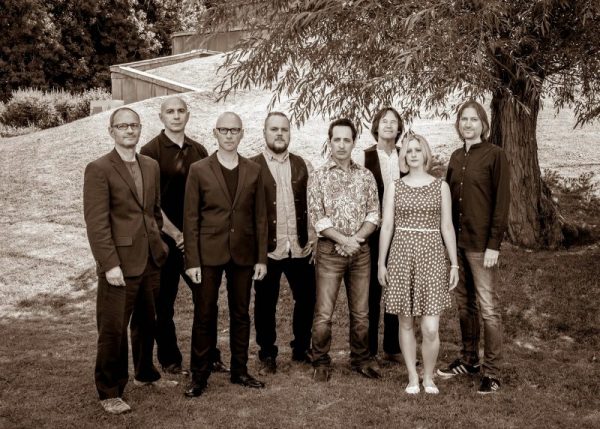
Hello Rikard. First of all, thank you for this interview to the Progshine and Consultoria do Rock websites. I’d like to start by talking about your latest projects with GungFly and Big Big Train. On March 20, the album On Her Journey To The Sun was made available for pre-order purchase on your official facebook. Tell us a little about the idea of the project and the process of recording it, which was be released on May 19th.
It’s not a concept album, but it has reoccurring themes throughout and the main one would be about a woman who was left behind when her lover made the ultimate sacrifice and died protecting a group of people. I think that is among the most courageous acts someone can do. Sometimes when someone dies they become almost untouchable and you hold the memory of them high, almost like a sun. So I decided that when this hero died he was reborn as a sun, hence the title On Her Journey to the Sun, so as the woman here is coming more and more to terms with what happened she is coming closer to her dead lover, making this title more of a spiritual journey and not a physical one – she’s on her spiritual journey to the sun. The Buddha was just chosen as the face of the sun because of the calm, sombre facial expression – someone who is at peace. I recorded the album on and off for about a year, but the bulk of the sessions took place in the fall of 2016.
Working a lot, you also became a member of the Big Big Train group in 2014, a group that for me, along with Beardfish, represents the cream of progressive rock in this millennium. How did you joined the English group?
Big Big Train hadn’t played live in seventeen years and were planning to do just that, so they had been looking for someone who could play keys and guitar and do some backing vocals. I had been on tour with Beardfish and the sound engineer on this tour was Rob Aubrey who works very closely with BBT and so he recommended me. After that I got an email from Greg Spawton who asked if I was interested in this – they were gonna do a session at Real World studios and record and film the entire process and release it as a blu ray – I was honoured and said yes straight away. The sessions went well and after that they asked if I wanted to join the band full time and I said yes.
What are the major influences that have you been able to bring to the band already for the album Folklore (2016)?
Well, that’s tough for me to say – I guess I’m bringing my own style of playing and my take on composing parts of course. A lot of the time Greg or David will have more or less finished parts but most of the time I’ll add a touch of Sjöblom to it. Then on the latest album “Grimspound” I’ve co-written the songs “Meadowland” and “A Mead Hall in Winter” with Greg Spawton and David Longdon.
What can you tell us about the new album, Grimspound?
I’m really happy with the way it turned out, and I’m happy to have written some stuff for it as well. It’s a very dynamic album, both compositionally and sonically.
Both Grimspound and On Her Journey To The Sun were released on vinyl. What is your opinion about the return of LP as a form of contact between fans and bands?
I never stopped listening to vinyl, it’s been my favourite format ever since I was a child and it still is. I mainly think it feels more like a real album when I hold an LP in my hands instead of a CD. I like the sound of vinyl as well, wouldn’t say it’s better – it is what it is – but some albums benefit from the limitations of that format.
Here in Brazil, vinyl ceased to be manufactured from the 90s, returning like a phoenix in the middle of the last decade, in benefit of CD sales. Traditional disc stores were closed, and the option was to turn to the international market, on sites like e-bay or Amazon, to search for vinyls. Has this vinyl / CD transition also occurred in Sweden, or has your country kept manufacturing the two formats over the years?
It’s been the same here actually – but there’s been some stores left selling CD’s and DVD’s (and t-shirts and coffee mugs and jewelry and stuff!) but not really like it was before of course.
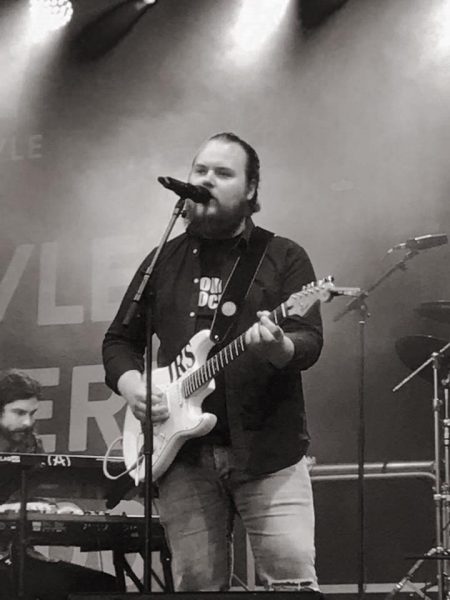
You also have a project alongside the monster drummer Hasse Bruniusson and guitarist Roine Stolt, playing songs by the late group Samla Mammas Manna. How did the idea of this project come about, and what can we expect in terms of shows and releases?
Hasse called me and asked if I was interested in playing these songs live for a festival in Uppsala together with him, Roine Stolt and bass player Håkan Almqvist. It felt like a good idea and since I listened a lot to the Samla albums when I was younger I sort of knew the songs pretty well in my head. It’s great, adventurous music and a lot of fun to play! We played in Gothenburg a couple of weeks ago and it was awesome.
All these projects involve progressive rock. Besides that style, what else do you usually listen to in your day to day?
I listen to most styles, a lot of it is prog related but still I would say I listen to as much pop/rock or metal as prog. I’m a big fan of Pearl Jam and I really like Chris Cornell, it was sad to hear about his passing in may. Lately I’ve been listening a lot to Daniel Romano – his two latest albums “Mosey” and “Modern Pressure” are both excellent.
Talking now about your career at Beardfish, the group started out as a quartet, but the band’s first album was recorded as a quintet, featuring Stefan Arosson on keyborads. How did works the keyboard split between you?
He played all the keyboards live back then (mainly organ and moog) and I only recorded some parts on the first album. When Stefan quit, right before the first album came out, was when I decided to play keyboards in Beardfish – we basically didn’t want any more people in the band so instead I took that role and played both keyboards and guitar. It was a very creative period for us.
Från en plats du ej kan se … was all recorded in Swedish, and after it, were three years for the release of The Sane Day, which already came with lyrics in English. What occurred for this delay in the release of the albums, as well as the change of the language.
No not at all. First of all: Från En Plats… has three songs in Swedish and four in English, so it was just a mix of the two languages. And we released The Sane Day in 2005, so it was two years, not three. Hahaha! Facts straightened 😊 The main reason it took two years to record was that we had so much new material and we didn’t know where to record it. Initially we tried recording it in our rehearsal studio but the sound quality wasn’t up to standard (Many of these recordings can be heard on The Early Years – Outtakes and Demos which was released together with ComfortZone) but when we had the studio and the gear I think we recorded most of the album in roughly two weeks – a double CD.

At the same time, since The Sane Day, all Beardfish albums are conceptual. What were the reasons that led you to write such interesting stories, and how did you “musicalize” these stories?
I mainly think that there were clear themes that came about when I started writing lyrics for the songs and it was easy to fall onto a path of “connect-the-dots”, you know..? The music was always there so writing the lyrics was always the hard part, I had to wait for a good idea to come – luckily one good idea usually spawned the next one. I think that’s the main reason they are thematic or “concept”-albums
With Sleeping in the Traffic, you started to use the accordion, instrument that was no longer used on other albums. Why did you prefer to follow only the keyboards, the guitar and the vocals?
There’s accordion on all of our albums except “The Void” and “+4626-COMFORTZONE” – but it may not always be credited in the sleeves. I always had the music first, not which instrument I played. My main goal is and has always been to get the best result, it doesn’t matter what instruments are used.
Here at Consultoria do Rock, Sleeping in the Traffic pt. 2 was voted one of the top ten albums of 2008. Why the album was split into pts 1 and 2, and not originally released in the double format, as was The Sane Day?
We didn’t have all of it recorded and it was recorded during three different sessions, maybe even four.. That’s the only reason I can think of.
In the Sleeping in the Traffic vol. 2 insert, you comment that the title track was written in 2002, being part of the group shows, but that there was not the opportunity to record it in the studio. At the same time, you cite some difficulties to complete the story. As specifically emerged the total creation of these two albums, which I consider the best works of Beardfish career.
Thank you. The song itself was finished in 2002, there is even an early recording of it from around that time, so no trouble finishing the story – BUT, it was a big song for us and it felt kind of weird to just throw it on an album so instead we chose to build two albums around the song, that’s why there is a double album.
In The Sane Day, I notice Focus’s influences at the open track, “A Love Story,” Frank Zappa at “Igloo on Two””, then I listen something like Gentle Giant at “Cashflow,” and going through several other references, A K of King Crimson at “Comfort Zone”. However, all these references arise spontaneously, without sounding pretentious. How to create something so cool with such a solid base of influences?
Hahaha! Well, you can’t ask me that!! I’ve heard different opinions about that several times, some think we sound very original and some think we rip other (the ones you’ve mentioned) artists off.. I don’t know. To my knowledge we never really stole anything, there might be sections that sound like other artists though.
Personally, what are your biggest idols and references to play?
Frank Zappa, King Crimson, Gentle Giant I would say. But then again… Elton John (early stuff), The Beatles, Chris Cornell (Euphoria Mourning and Soundgarden), Jeff Buckley, Pearl Jam, Samla Mammas Manna + every artist I’ve ever been fortunate enough to work with as well.
Zappa is also part of another project. How does the selection of songs that the band present in your shows work?
The group is called Bongo Fury. Is a trio with Petter Diamant and his brother Rasmus Diamant plus myself doing Frank’s music in a power trio format – so basically it’s Gungfly (light trio version) playing Frank Zappa songs. We only picked songs we thought worked well to cover as a trio.
How was the band’s meeting with Gary Green during the ProgDay Festival, as well as the presentation and receptivity of the Americans in that was the band’s first performance outside of Sweden.
It was great meeting Gary Green. All of us are big Gentle Giant fans so we thought it was really cool that he was there. It was a cool festival as well and we had a great time, both playing and hanging out. We met some life long friends there in Ray Loboda and Jim Robinson.
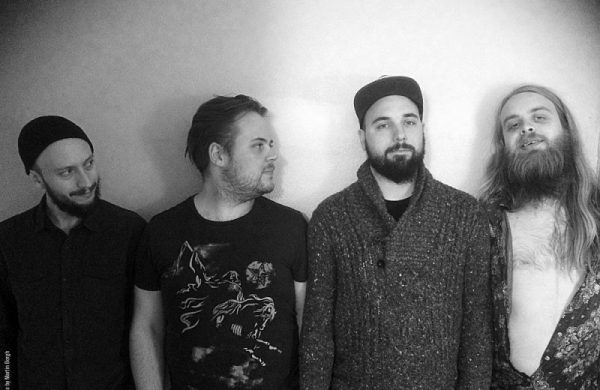
Among the Beardfish albums, which one you liked to write, and which one you became more proud after final result?
My favourite is Destined Solitaire, both musically and the period we spent making the music.
In the official farewell of the band, via website, fans read the message with a shocking phrase, talking about misunderstandings and various difficulties within the band, shortly after Comfort Zone be release, as well as new paths will be followed by each member of the band. What really was the determining factor for the end of a project as incredible and wonderful as Beardfish?
We didn’t function well together in a room any longer.
Can we expect a return, at least to celebrate the 20-year career?
You never know. No plans now.
About Brazil, have you had the opportunity to come to our country, either as a tourist or as a musician?
No, unfortunately not. Closest we’ve been was French Guyana.
Talking about progressive rock bands, our country has such prominent names as O Terço, Mutantes, Terreno Baldio, Som Nosso de Cada Dia, among others. Have you heard anything progressive coming from our country?
No, I’m sorry I haven’t. Will check it out!
With so many projects in your career, and so many fans around here, we sure hope that someday you’ll be on our stage to show your music. Still, in Consultoria, we have a section called “Ficticious News that we would like to be Real”. Would it be possible to make real a news story like “Rikard presents himself in Brazil at a big festival?”
Hahaha! I hope so – can’t promise anything but I would love to come to Brazil and play!
Rikard, thank you for your attention and please leave a message for our readers and also your fans here in Brazil.
Thank you for listening to the music throughout the years – I hope to be able to come over there and play for you soon!
Cheers – Rikard Sjöblom

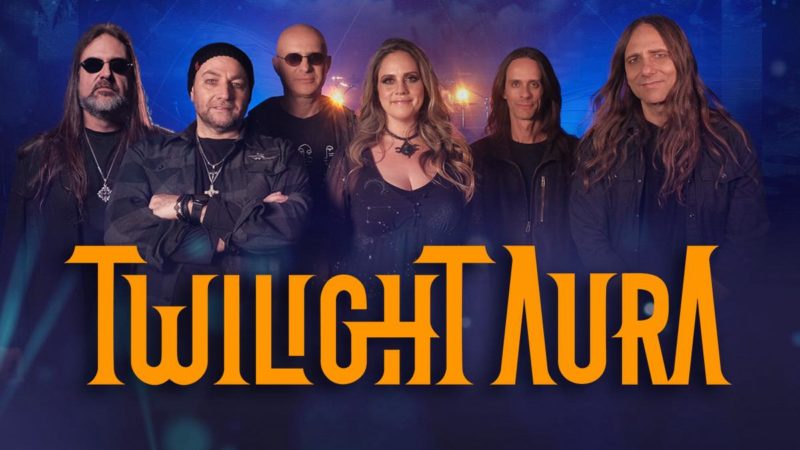

Muita maneira a entrevista! já dei algumas chances ao Big Big Train, mas sinto a falta de elementos mais marcantes na música deles…o Beardfish já aprecio mais e o Gungfly tá na fila. Abraço!!!
Valeu Ronaldo. Cara, eu curti muito esse disco novo do Gungfly. Vale a pena!!
Achei essa entrevista agora por acaso, curti demais, pena que já tem alguns anos. Sou fã dos projetos do Rikard (Beardfish, Gungfly, Bootcut, etc.) desde 2009, que sonho seria o Rikard aqui no Brasil!
Ola Luiz, que legal seu comentário meu caro. Rikard é um dos grandes nomes do prog na atualidade. Sonhar não custa, e certamente, ele vindo ao Brasil, irei ao show mais próximos. Qual seu disco favorito do Beardfish? Abraços
Complicado, mas nessa acho que estou com o Rikard, meu preferido é o Destined Solitaire. Na carreira solo achei o On Her Journey To The Sun praticamente do mesmo nível. E o seu? Ano passado comentei em uma publicação dele no Instagram perguntando sobre um novo álbum, e parece que deve rolar, mas ele não deu nenhuma dica de data. É daqueles artistas que não tem como parar de acompanhar.
Meu preferido é o Sleeping 2, seguido do Comfort Zone e do The Void. Solo com certeza é o on her journey. Tomara que venha mais solo.Abraços